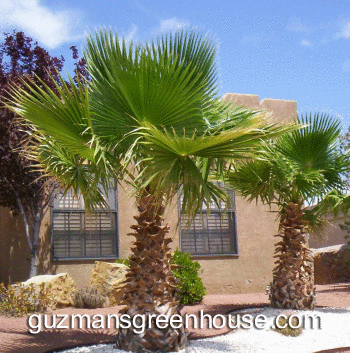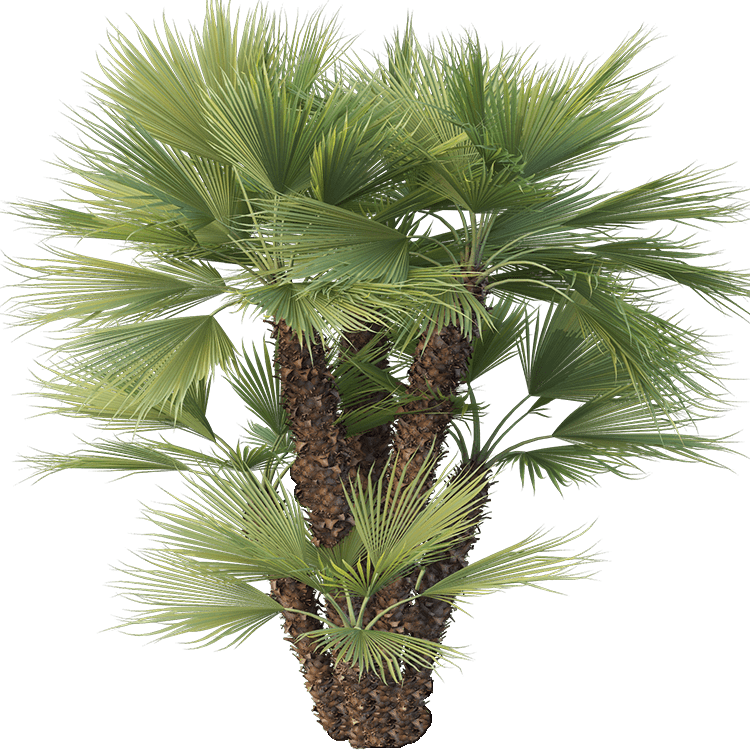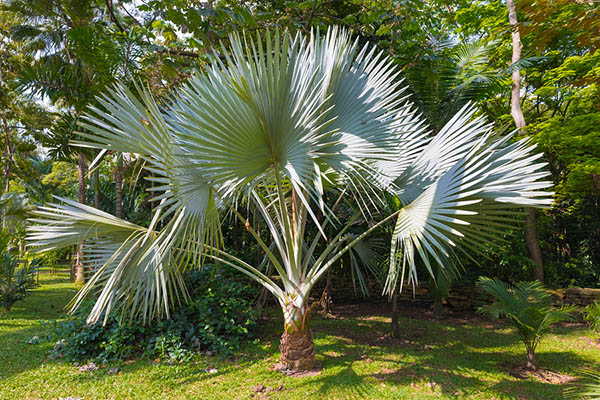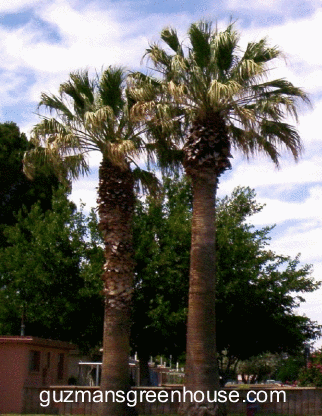
Palm Trees of the southwest
Palm Trees of the southwest. The Mediterranean Palm (Chamaerops humilis) Is a slow-growing palm tree that will reach about 15ft. – 20ft. tall and wide. Very cold hardy palms can take temperatures down to about 10 degrees Fahrenheit. It is an evergreen tree, so it has good year-round color. Excellent around ponds or pools and drought tolerant once established. Very hardy palm tree. It can actually do quite well in a large container but will require more water during the hot summer season.

The palm tree will do very well in the Desert Southwest. The fronds will stay green year-round giving it a much more eye-pleasing look during the cold season. Be sure to follow a regular watering schedule when first planted. This will help establish a deep, extensive root system.
How much water
Watering can be reduced after establishment. Feed with a general-purpose palm tree fertilizer (Carl Pool Palm Food) before new growth begins in spring. This is one palm tree that Color Your World Nursery in Las Cruces, NM will have available on a year-round basis.
Do not trim off palm older fronds until after the last frost. The older fronds surrounding the tree will help protect the tree from the colder temperatures during winter.
Visit this page for more information. Care of Palm Trees.
The California Palm tree (Washingtonia filifera)
Also called the California Washintonia. It is a hardy palm tree and can tolerate temperatures down to 20° or so. The tree will grow to about 20-40 ft. tall and the fronds will reach about 20 ft wide. It is drought tolerant once it gets established, usually around the third or fourth year. California palm trees will get wide at the base up to 3-4 ft. wide. So, give it room to grow place it at least 20ft. from a wall.
Palm Trees of the Southwest
Mexican Fan Palm Scientific Name: Washingtonia robusta
It can take full sun USDA Zone 7-10 and can grow to about 100ft tall. Fronds must be cut back from winter frost damage in the southwest. Low water once established. Always plant in full sun. It is much taller than its cousin the California fan palm.
The Pindo Palm: USDA Hardiness Zone: 8 – 11.

Pindo Palm, (Butia capitata) it tolerates colder climates, with 3-foot long silvery green arching fronds. Stout, thick trunk with bold foliage sprays from the top. In warmer climates, 3 to 4-foot-long creamy yellow to reddish flower clusters produce a sweet, edible fruit called Pindos. Pindo palms can tolerate freezing temperatures down to about 15 ° Fahrenheit.
Need to know your hardiness zone? Hardiness Zone.
The Windmill Palm. Trachycarpus fortunei:

USDA Hardiness Zone: 8 – 11. A very hardy palm tree with distinctive hairy black fibers covering its slender, graceful trunk. The fronds are much wider than other palm trees. A good-looking compact crown that makes it a good garden patio tree, or container specimen. It may reach 25 ft. tall and the crown will get about 10ft. wide sometimes wider if conditions are good.
The Canary Date Palm (Phoenix canariensis)

Also called the Phoenix palm. It will produce a long-trunked heading into its tenth year or so. A Palm with graceful arching fronds. A good-looking palm in and around the swimming pool or in desert landscapes. Good on slopes, in parks, or along streets. It will do well in a large decorative pot for the 2-7 years of its life. Prune off old dying fronds after the last frost for a better-looking appearance. A drought-tolerant palm once it becomes established. USDA zone 8-11.
Palm Trees of the southwest

